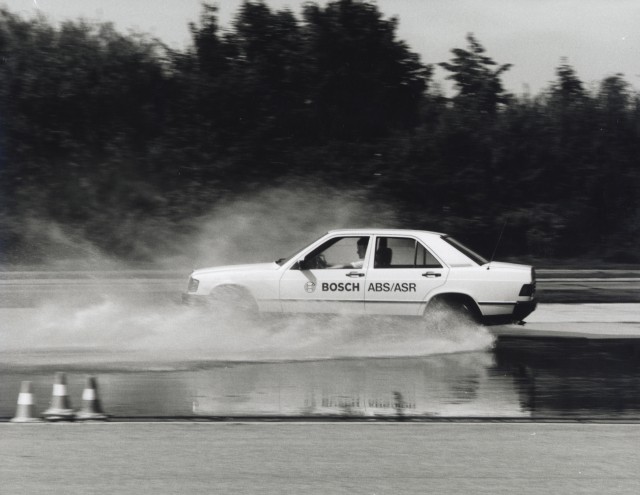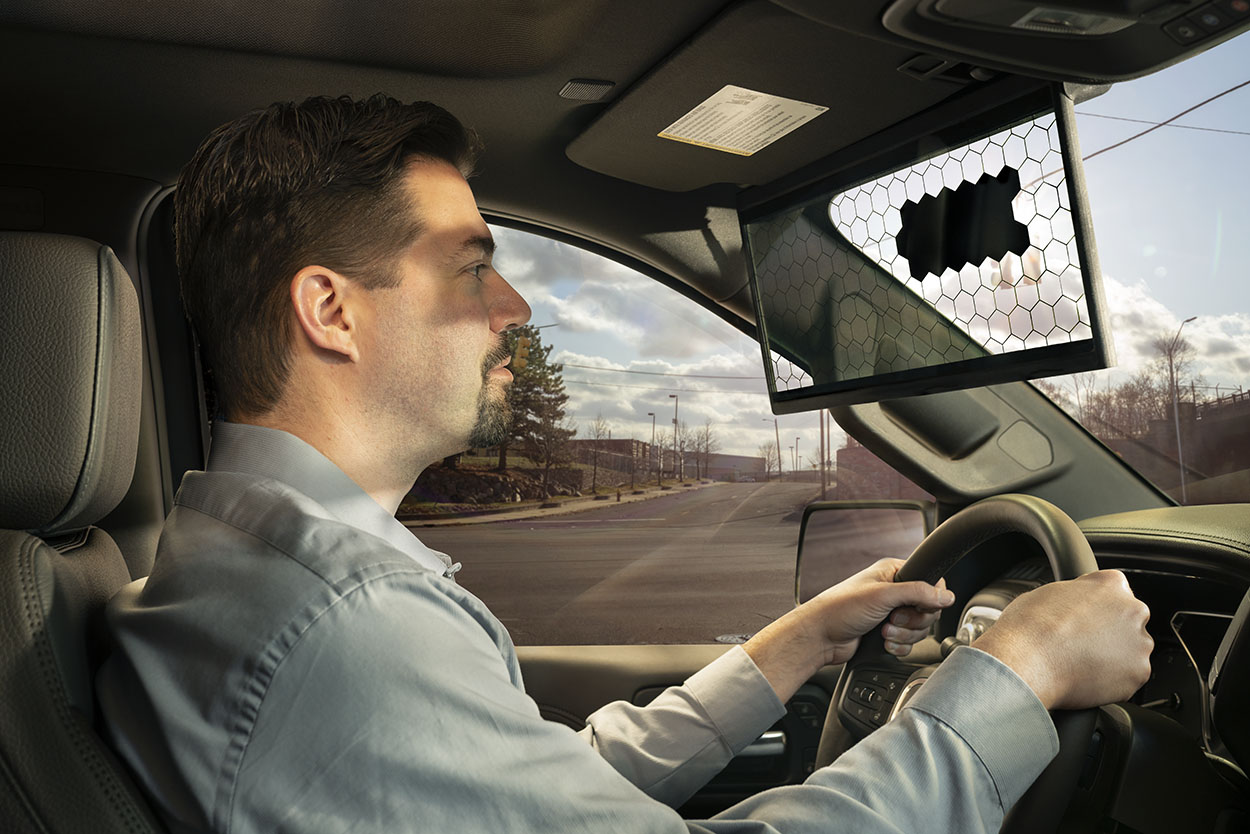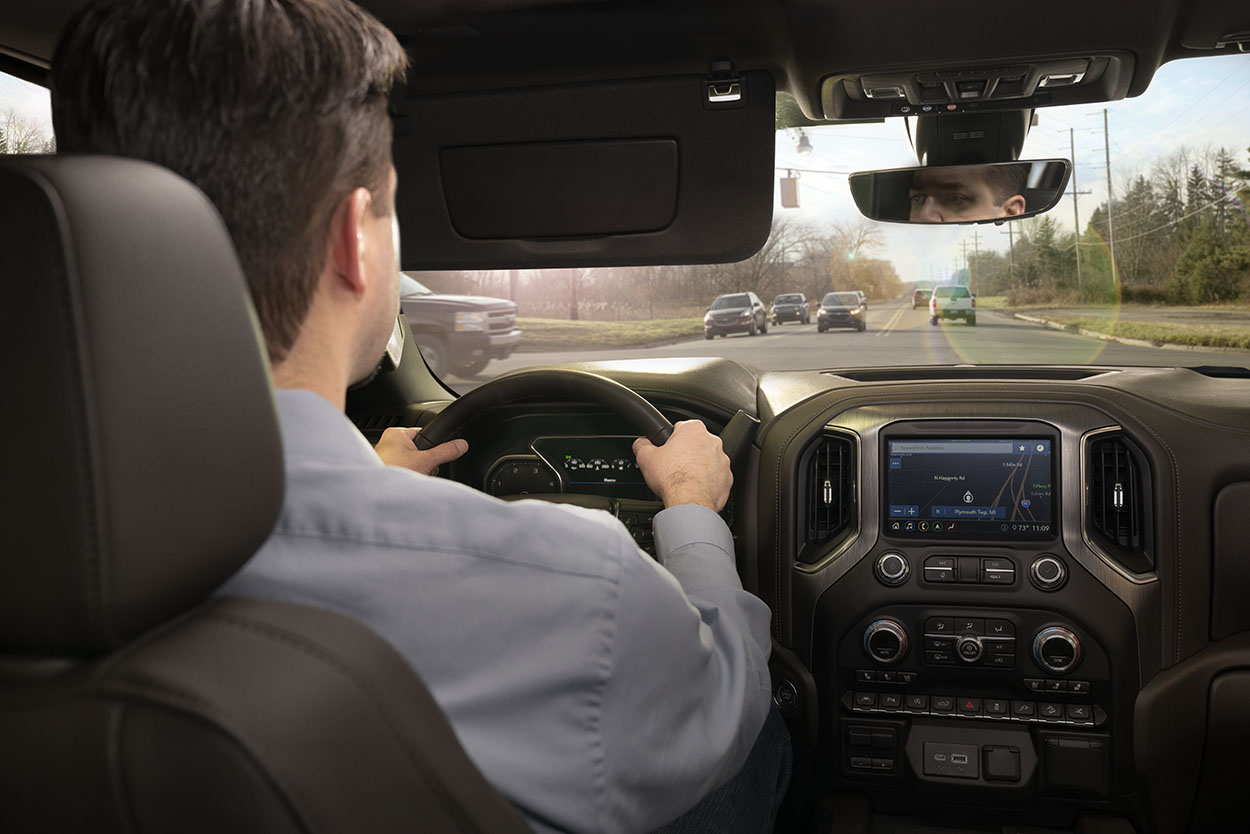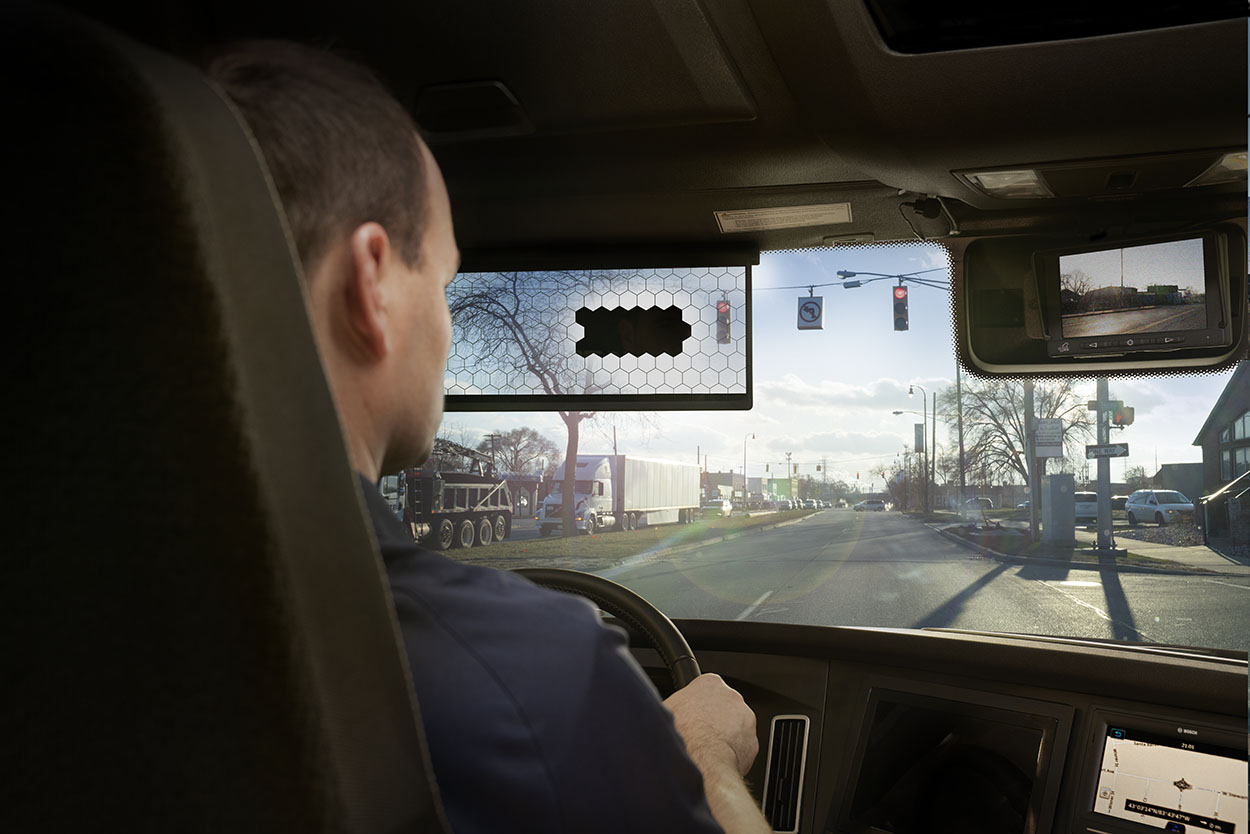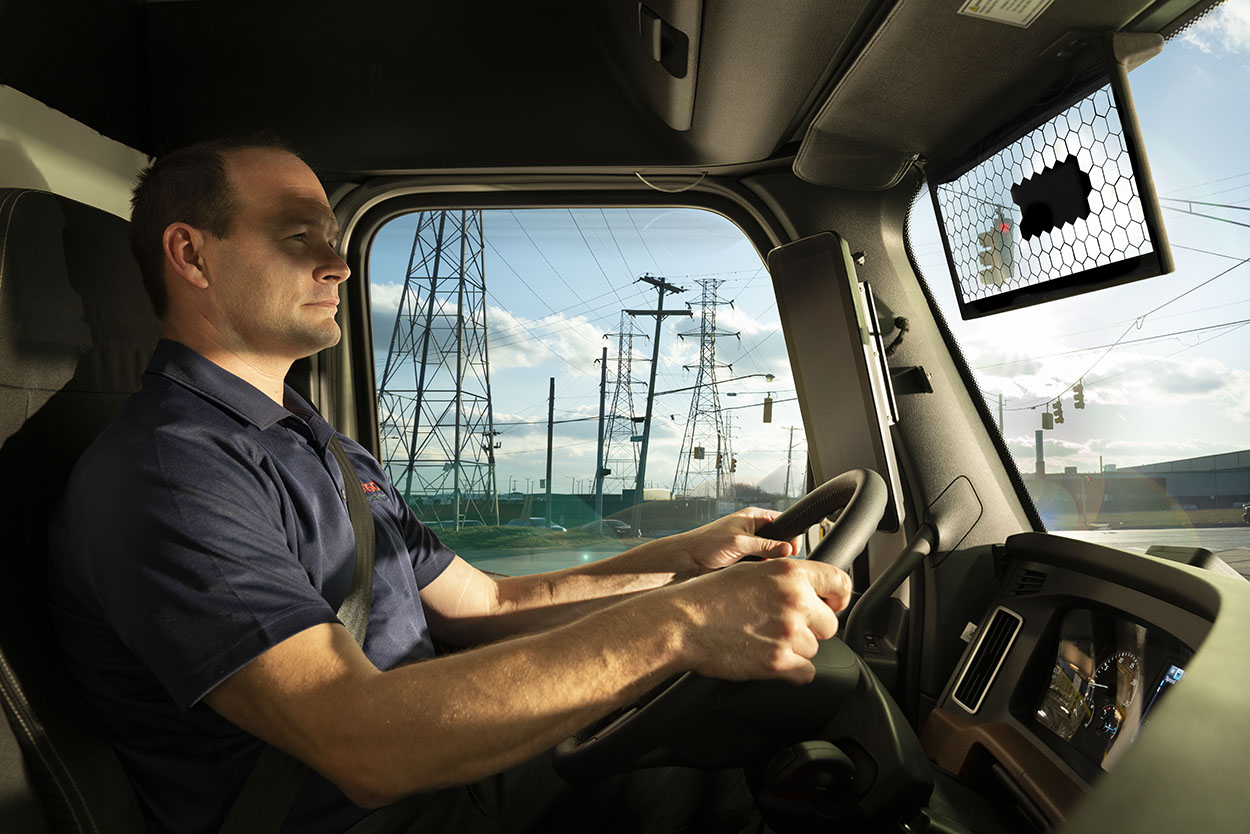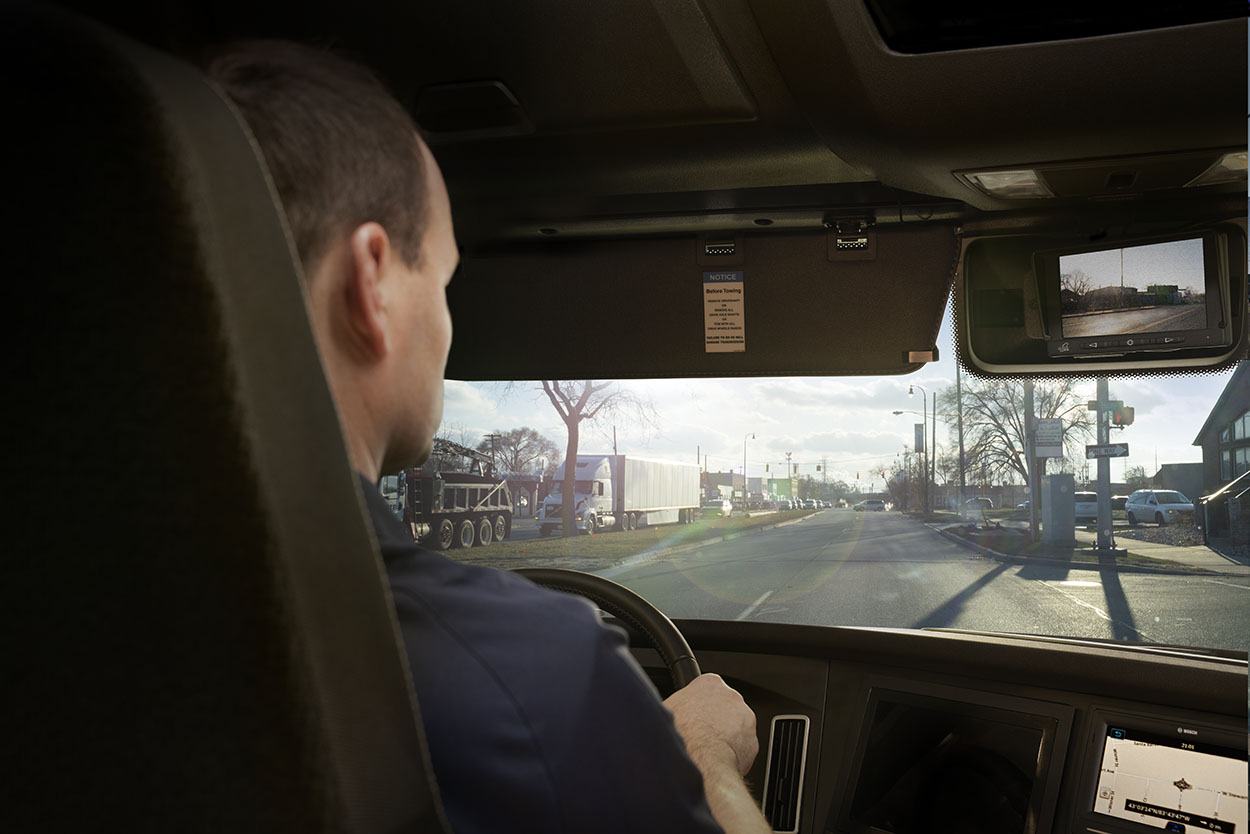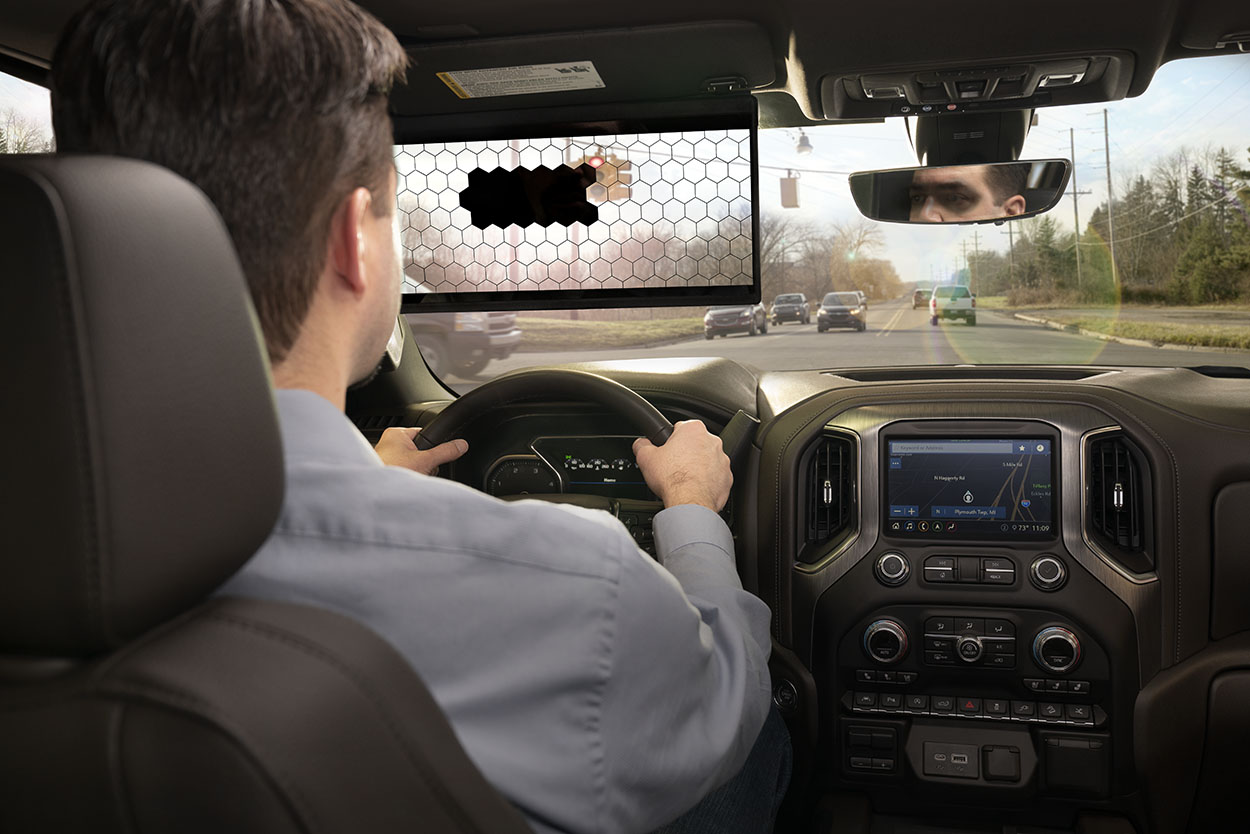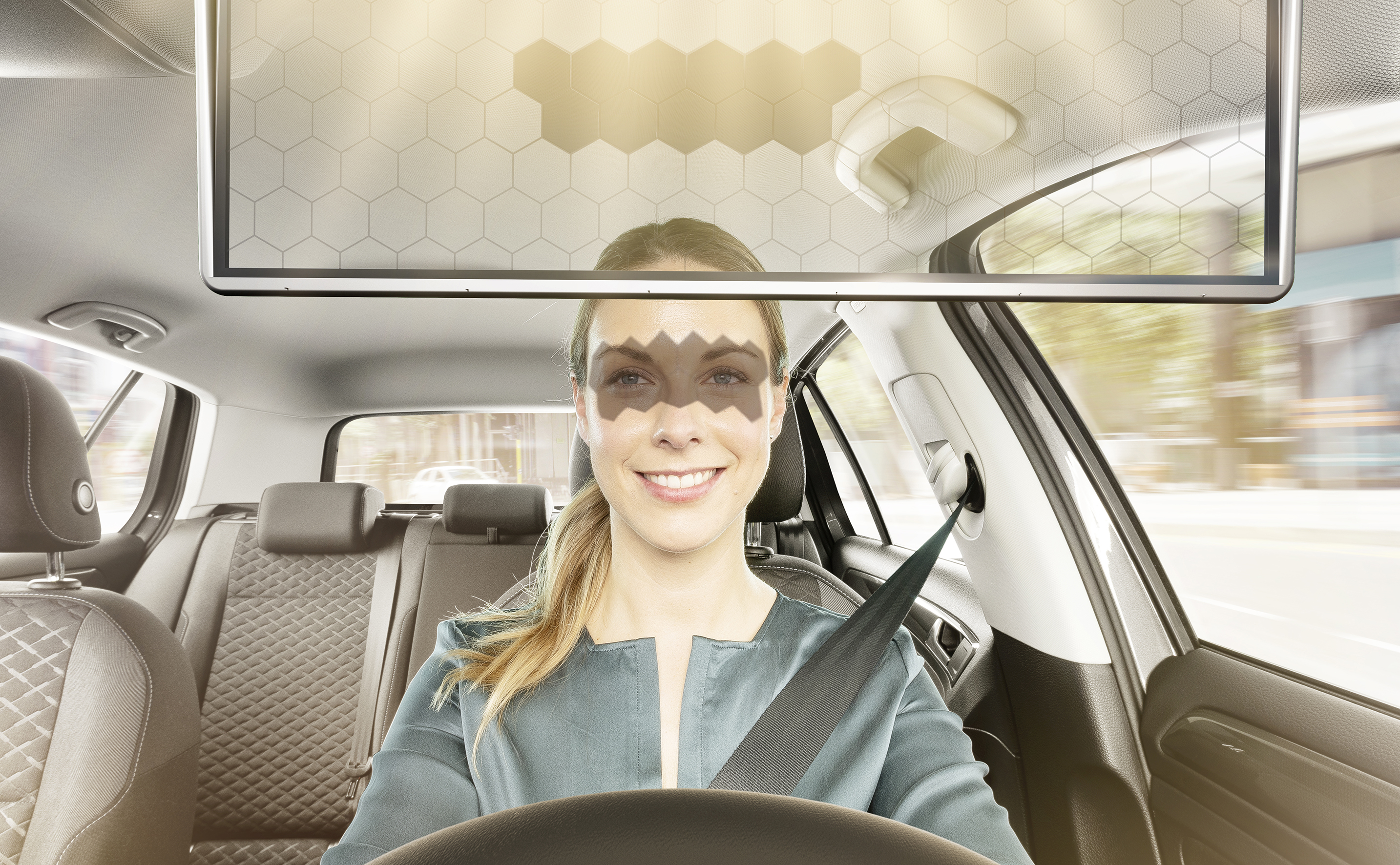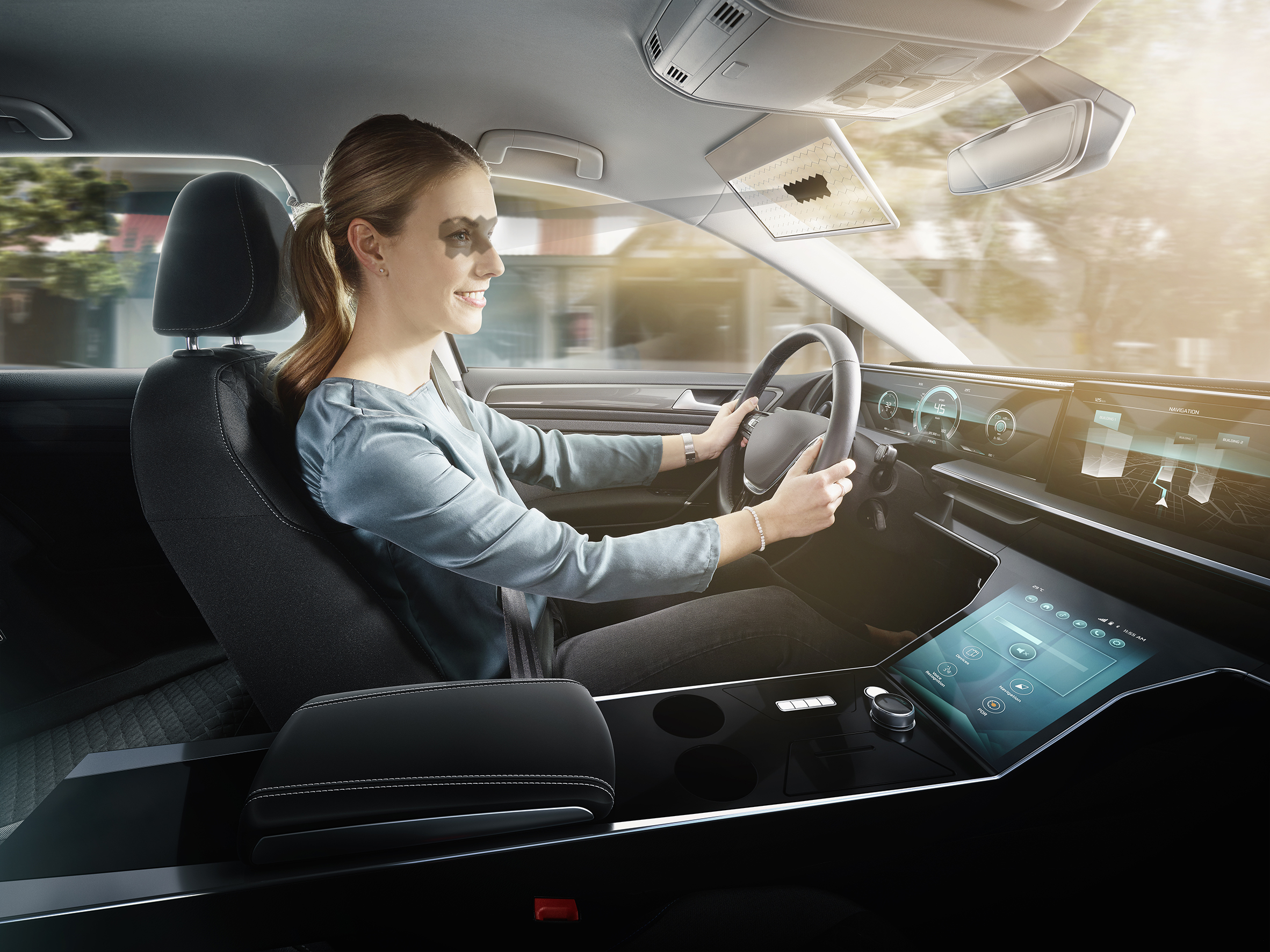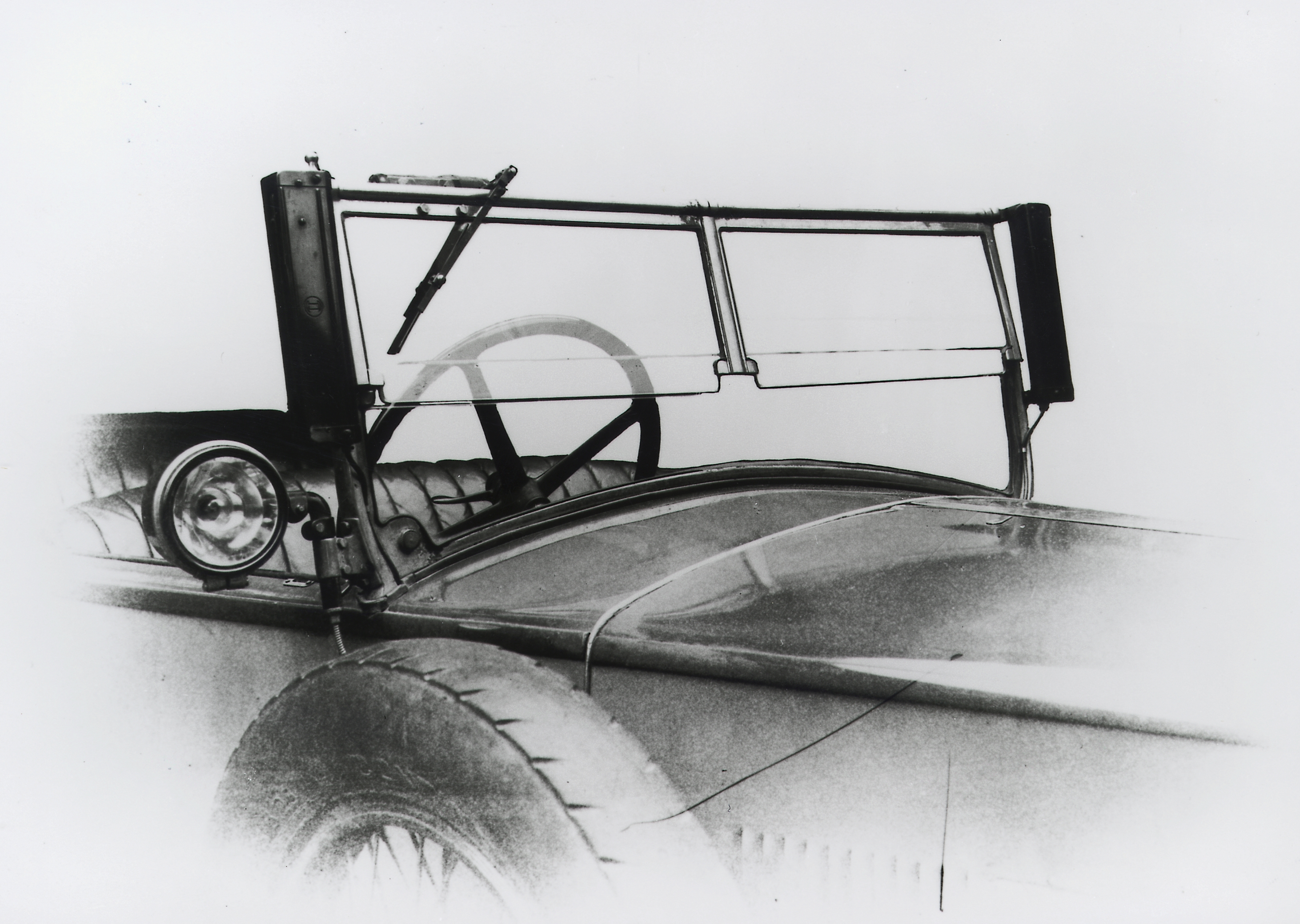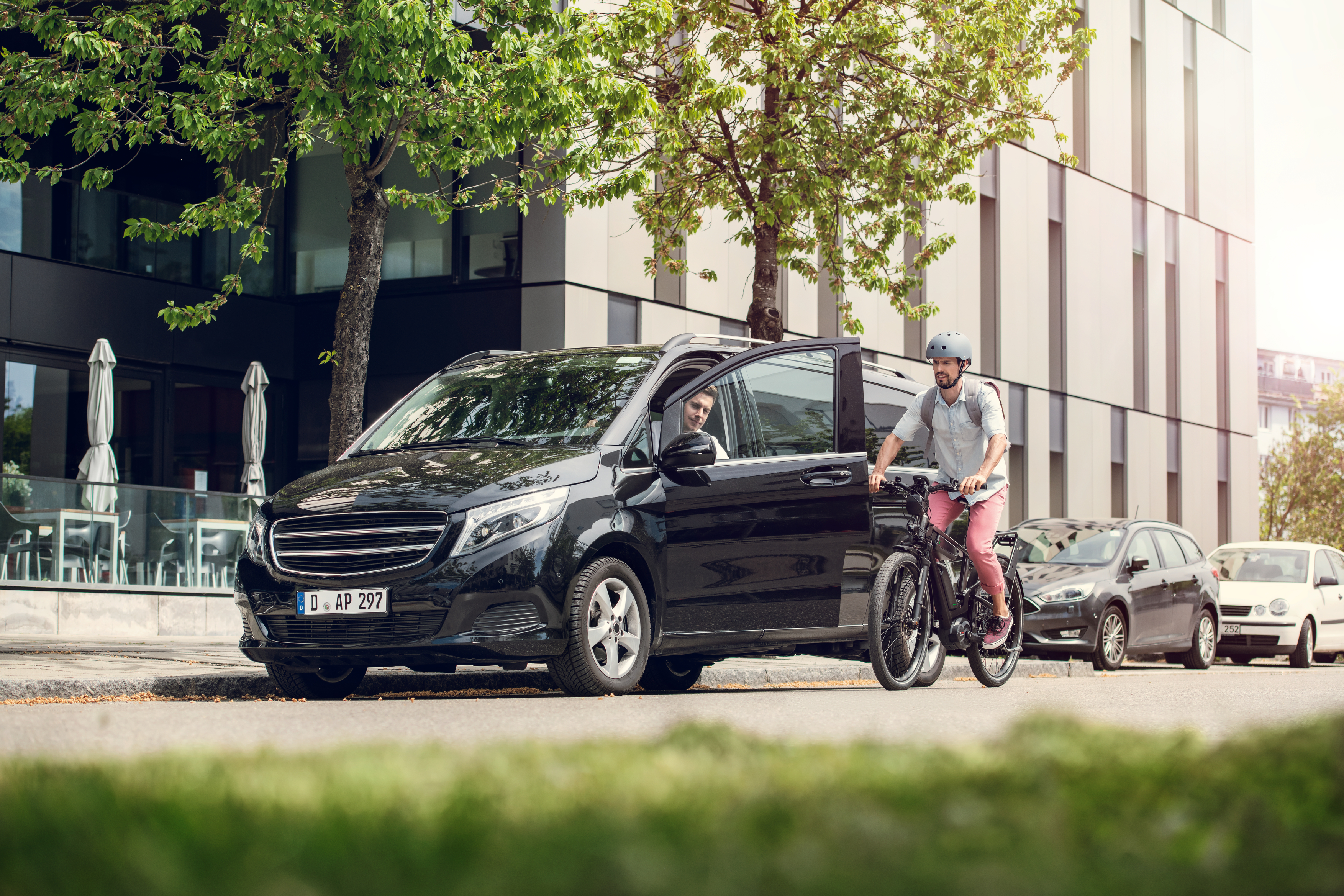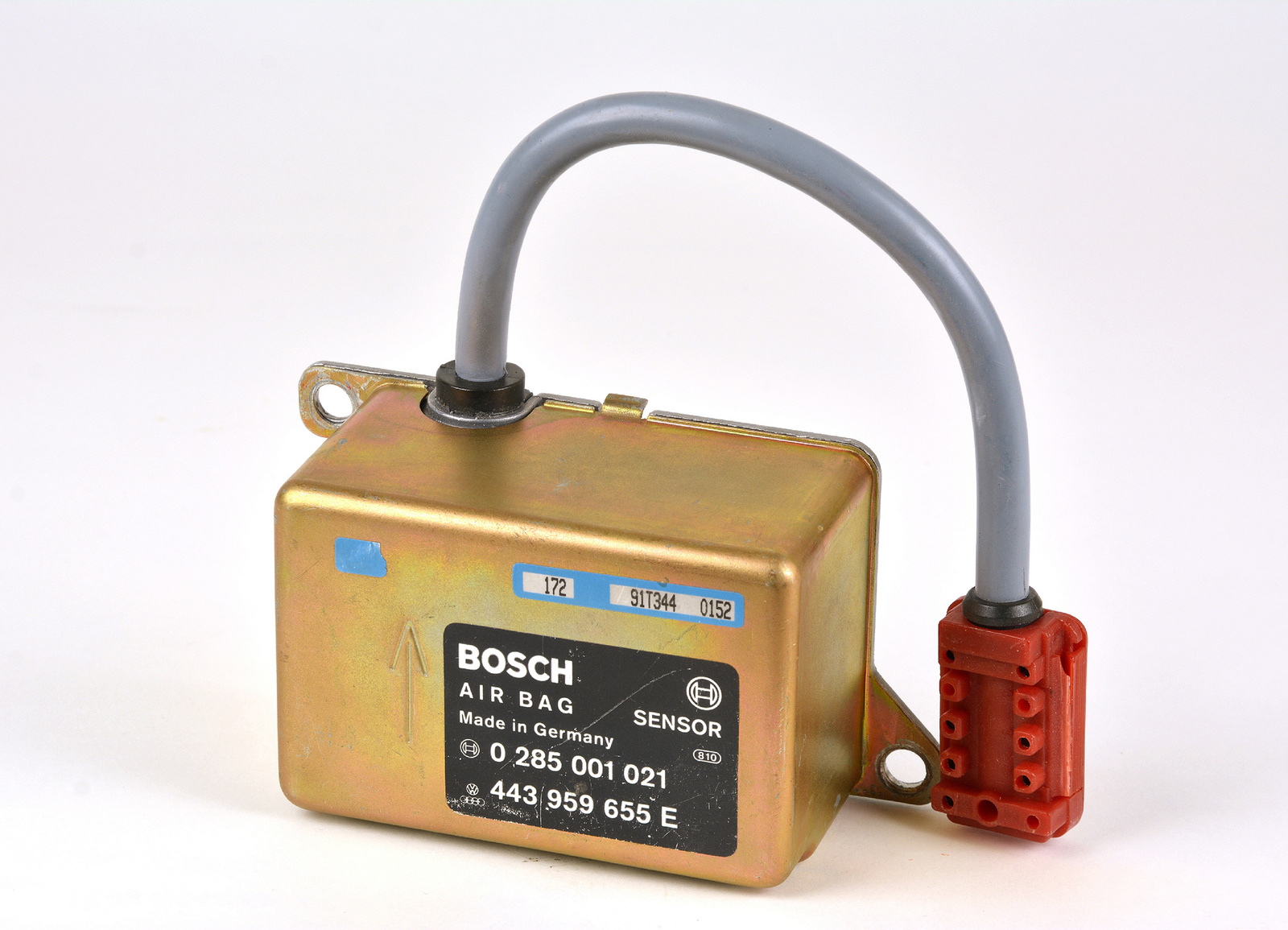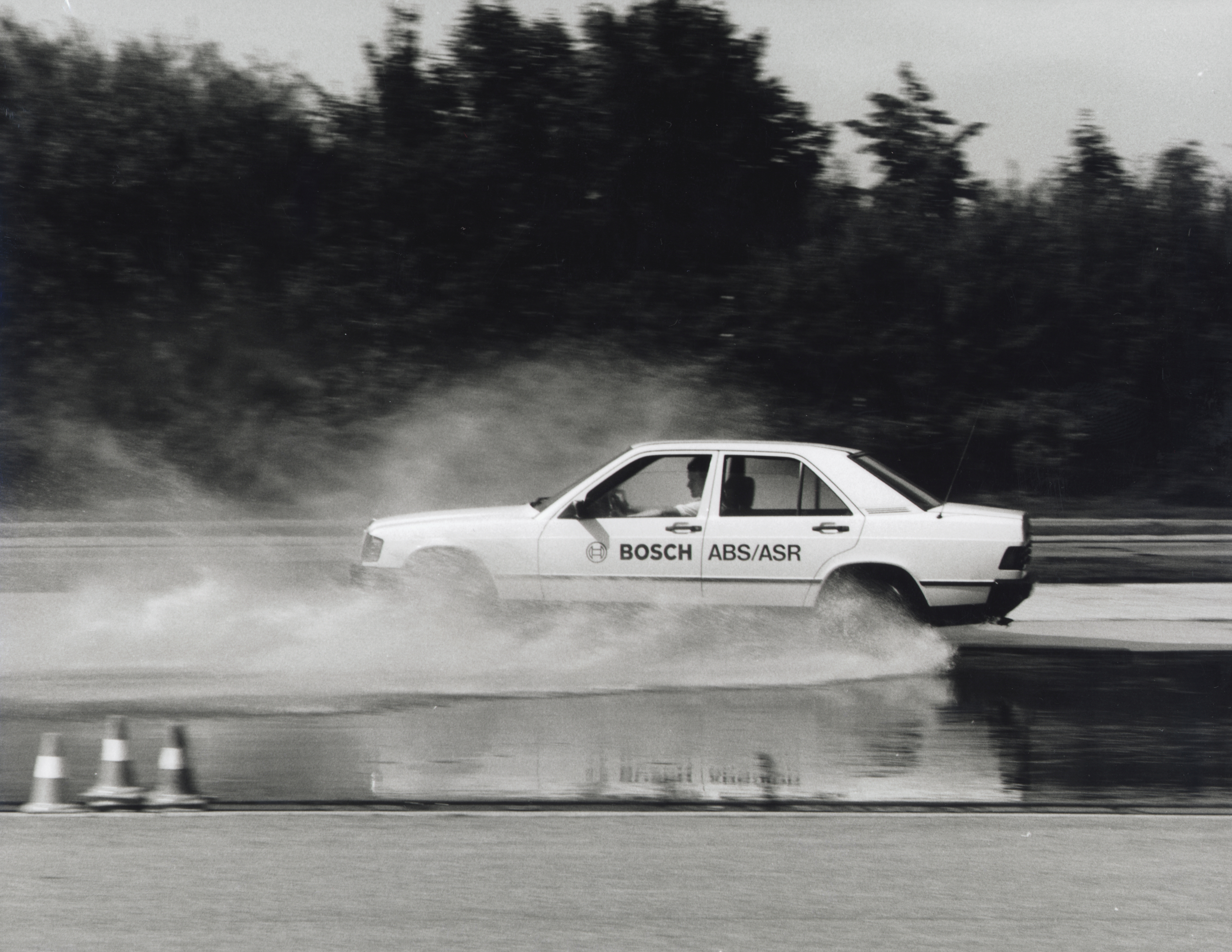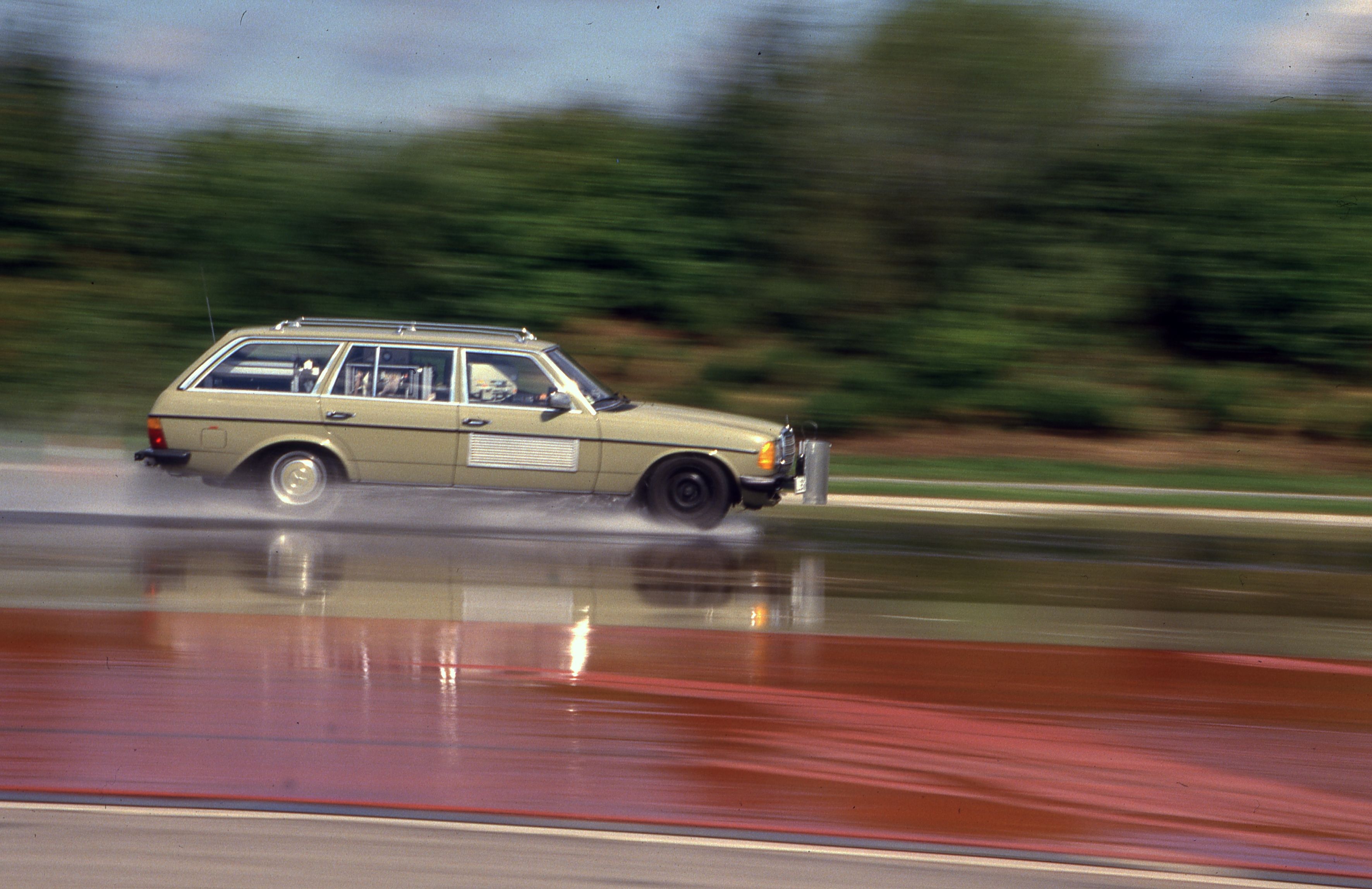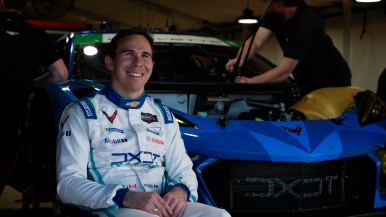1926: Windshield wiper
Goodbye to poor visibility: comprising an electric motor that drove a rubber-coated arm via a worm screw and gear, the Bosch electric windshield wiper finally gave drivers a clear view of the road ahead. It was followed in 1959 by an electric windshield washer system. Activated at the push of a button, an electric pump precisely sprayed water on to the windshield through one or several nozzles that were mounted on the hood.
1927: Power-assisted brake for commercial vehicles
In the years after 1900, vehicles became increasingly fast and powerful, but braking force was unable to keep up. This prompted Bosch to develop a pneumatic brake booster for heavy trucks, whose heavy loads meant especially long braking distances. The system used the vacuum that arises in the induction tract of the engine, so that only one-third as much pressure now had to be applied to the brakes.
1928: Bosch brake assistant
Bosch also used this innovative brake technology, premiered in 1927, in passenger cars. There were two challenges: to achieve a compact design that would allow it to be installed in the tight space available in the engine compartment, and to make it more affordable. The technology became established as standard equipment. As in the case of the Bosch brake for trucks, drivers now only had to apply one-third of the pedal pressure, and braking distance was also reduced by one-third.
1957: Asymmetric low-beam headlights
In 1913, Bosch started production of a new automotive lighting system. The system comprised a generator, headlights, a battery, and a regulator. And while these lighting systems were continuously improved, they still had one disadvantage: they dazzled oncoming vehicles. The more cars there were on the roads, the more inconvenient and dangerous the situation became. In 1957, Bosch premiered asymmetric low-beam headlights. This system causes less dazzle for oncoming traffic and illuminates the driver’s own side of the road better.
1978: ABS antilock braking system
Following nine years of development work, 1978 marked the start of the success story of ABS, the electronically controlled antilock braking system for four-wheeler passenger cars. If the wheels lock up, ABS reduces brake pressure then increases it again – up to 40 times a second. This keeps braking distances short, even on slippery surfaces, and the vehicle remains steerable. For motorcycles, the EU mandated the system for all new type approvals from 2016.
1926: Windshield wiper
Goodbye to poor visibility: comprising an electric motor that drove a rubber-coated arm via a worm screw and gear, the Bosch electric windshield wiper finally gave drivers a clear view of the road ahead. It was followed in 1959 by an electric windshield washer system. Activated at the push of a button, an electric pump precisely sprayed water on to the windshield through one or several nozzles that were mounted on the hood.
1927: Power-assisted brake for commercial vehicles
In the years after 1900, vehicles became increasingly fast and powerful, but braking force was unable to keep up. This prompted Bosch to develop a pneumatic brake booster for heavy trucks, whose heavy loads meant especially long braking distances. The system used the vacuum that arises in the induction tract of the engine, so that only one-third as much pressure now had to be applied to the brakes.
1928: Bosch brake assistant
Bosch also used this innovative brake technology, premiered in 1927, in passenger cars. There were two challenges: to achieve a compact design that would allow it to be installed in the tight space available in the engine compartment, and to make it more affordable. The technology became established as standard equipment. As in the case of the Bosch brake for trucks, drivers now only had to apply one-third of the pedal pressure, and braking distance was also reduced by one-third.
1957: Asymmetric low-beam headlights
In 1913, Bosch started production of a new automotive lighting system. The system comprised a generator, headlights, a battery, and a regulator. And while these lighting systems were continuously improved, they still had one disadvantage: they dazzled oncoming vehicles. The more cars there were on the roads, the more inconvenient and dangerous the situation became. In 1957, Bosch premiered asymmetric low-beam headlights. This system causes less dazzle for oncoming traffic and illuminates the driver’s own side of the road better.
1978: ABS antilock braking system
Following nine years of development work, 1978 marked the start of the success story of ABS, the electronically controlled antilock braking system for four-wheeler passenger cars. If the wheels lock up, ABS reduces brake pressure then increases it again – up to 40 times a second. This keeps braking distances short, even on slippery surfaces, and the vehicle remains steerable. For motorcycles, the EU mandated the system for all new type approvals from 2016.
1980: Electronic airbag control
In 1980, Bosch was the first European company to manufacture electronic triggering units for passive safety systems. This set the standard in road safety. The triggering unit comprised three components made up of some 170 individual parts, and controlled the driver airbag. It was first installed in the Mercedes-Benz S-class. Up to nine airbags are installed in today’s vehicles. They are deployed individually, depending on the accident scenario.
1986: TCS traction control system
The TCS traction control system prevents the driven wheels from spinning. The electronic control unit reduces the speed of the spinning wheels until they recover their grip. TCS is an early example of networking diverse automotive electronic systems. When traction control is activated, it intervenes in the engine management or brake control system. Despite actuation of the accelerator, engine power is continuously lowered, or the brake is actuated, until the wheels recover their grip. Traction control can also brake a wheel individually in order to divert engine power to another drive wheel if the latter offers better traction.
1995: MEMS in mass production
In the 1980s, Bosch worked on making sensors smaller, more reliable, and more energy efficient, as a way of providing ever more sensor data in cars. Following the start of mass production in 1995, these miniature helpers became ever more prevalent, furnishing control units with data about when the car brakes or accelerates, as well as about the direction the car is traveling. Information such as this is important for safety systems such as ESP®.
1995: ESP® electronic stability program
Using smart sensors, ESP® compares 25 times per second whether the car is actually moving in the direction that the driver is steering it in. If it is not, the system intervenes. By reducing engine torque and deliberately braking each wheel individually, the system helps the driver stabilize the vehicle and prevent skidding accidents. Since its market launch in 1995, ESP® has prevented just under half a million accidents and saved more than 15,000 lives in the EU alone. Bosch celebrates a milestone this year: it has sold 250 million ESP® systems since production began 25 years ago.
2010: Predictive emergency braking system
Ever more sensors in cars, sharing information with each other, make completely new applications possible: the emergency braking system that went into production in 2010 makes use of the information radar and video sensors share with the ESP®. If there is a threat of collision, it offers drivers multi-stage support. First, it alerts to the need to brake hard. If this alert is not heeded, the system initiates partial braking, and if the driver still does not react, it triggers emergency braking.
2013: MSC motorcycle stability control
In 2013, Bosch took its ESP® success story, which began in 1995, and applied it to two-wheelers. In all riding situations, MSC motorcycle stability control ensures maximum stability: when braking and accelerating, on straight stretches and in bends. Wheel sensors measure wheel speed, and a further sensor measures lean and pitch angles. If the system detects a wheel on the verge of locking up, braking pressure is lowered and built up again within a fraction of a second, ensuring that the correct amount of pressure is constantly applied to prevent each wheel from locking up. This can save motorcyclists’ lives.
2018: eBike ABS
Bosch has been manufacturing antilock braking systems for cars since 1978, and for motorcycles since 1995. They were joined in 2018 by an ABS for eBikes, which Bosch developed in collaboration with the brake manufacturer Magura. The world’s first production antilock braking system for pedelecs reduces the risk of becoming unseated in critical situations. In this front-wheel ABS, the hydraulic brakes and electronic brake system are perfectly tuned to each other. Wheel-speed sensors monitor the speed of both wheels. As soon as the front wheel threatens to lock up, the system regulates brake pressure to optimize riding stability. This is a huge added boost to rider safety. In addition, the rear wheel lift control function reduces the risk of a head-over-heels accident. If far too much brake force is applied, the ABS regulates the pressure applied to the front wheel, so that the rear wheel can quickly regain traction.
In 1980, Bosch was the first European company to manufacture electronic triggering units for passive safety systems. This set the standard in road safety. The triggering unit comprised three components made up of some 170 individual parts, and controlled the driver airbag. It was first installed in the Mercedes-Benz S-class. Up to nine airbags are installed in today’s vehicles. They are deployed individually, depending on the accident scenario.
1986: TCS traction control system
The TCS traction control system prevents the driven wheels from spinning. The electronic control unit reduces the speed of the spinning wheels until they recover their grip. TCS is an early example of networking diverse automotive electronic systems. When traction control is activated, it intervenes in the engine management or brake control system. Despite actuation of the accelerator, engine power is continuously lowered, or the brake is actuated, until the wheels recover their grip. Traction control can also brake a wheel individually in order to divert engine power to another drive wheel if the latter offers better traction.
1995: MEMS in mass production
In the 1980s, Bosch worked on making sensors smaller, more reliable, and more energy efficient, as a way of providing ever more sensor data in cars. Following the start of mass production in 1995, these miniature helpers became ever more prevalent, furnishing control units with data about when the car brakes or accelerates, as well as about the direction the car is traveling. Information such as this is important for safety systems such as ESP®.
1995: ESP® electronic stability program
Using smart sensors, ESP® compares 25 times per second whether the car is actually moving in the direction that the driver is steering it in. If it is not, the system intervenes. By reducing engine torque and deliberately braking each wheel individually, the system helps the driver stabilize the vehicle and prevent skidding accidents. Since its market launch in 1995, ESP® has prevented just under half a million accidents and saved more than 15,000 lives in the EU alone. Bosch celebrates a milestone this year: it has sold 250 million ESP® systems since production began 25 years ago.
2010: Predictive emergency braking system
Ever more sensors in cars, sharing information with each other, make completely new applications possible: the emergency braking system that went into production in 2010 makes use of the information radar and video sensors share with the ESP®. If there is a threat of collision, it offers drivers multi-stage support. First, it alerts to the need to brake hard. If this alert is not heeded, the system initiates partial braking, and if the driver still does not react, it triggers emergency braking.
2013: MSC motorcycle stability control
In 2013, Bosch took its ESP® success story, which began in 1995, and applied it to two-wheelers. In all riding situations, MSC motorcycle stability control ensures maximum stability: when braking and accelerating, on straight stretches and in bends. Wheel sensors measure wheel speed, and a further sensor measures lean and pitch angles. If the system detects a wheel on the verge of locking up, braking pressure is lowered and built up again within a fraction of a second, ensuring that the correct amount of pressure is constantly applied to prevent each wheel from locking up. This can save motorcyclists’ lives.
2018: eBike ABS
Bosch has been manufacturing antilock braking systems for cars since 1978, and for motorcycles since 1995. They were joined in 2018 by an ABS for eBikes, which Bosch developed in collaboration with the brake manufacturer Magura. The world’s first production antilock braking system for pedelecs reduces the risk of becoming unseated in critical situations. In this front-wheel ABS, the hydraulic brakes and electronic brake system are perfectly tuned to each other. Wheel-speed sensors monitor the speed of both wheels. As soon as the front wheel threatens to lock up, the system regulates brake pressure to optimize riding stability. This is a huge added boost to rider safety. In addition, the rear wheel lift control function reduces the risk of a head-over-heels accident. If far too much brake force is applied, the ABS regulates the pressure applied to the front wheel, so that the rear wheel can quickly regain traction.

